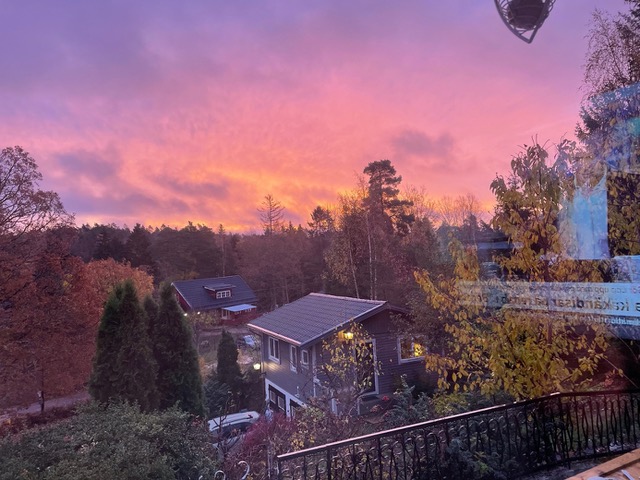“IN DEFENSE OF SHAPESHIFTING”
“The object of having a style, as opposed to merely being stylish, is not to be different from other people but to be more like yourself than nature has made you.”
- Quentin Crisp
Over and over again, it’s been made apparent that I’m not going to impress anyone by imitation, even if I am rather skilled at it. I’ve been on a quest for authenticity my entire life. The tension between self and non-self spirals into oblivion, and the way I show myself to others has always trailed a few steps behind some nebulous ideal. My people-pleasing tendencies, perfectionism, and vicious anti-authoritarian streak have always clashed discordantly, making conformity to any style or beauty standard extremely difficult.
I was assigned female at birth, but I identify as gender-neutral most of the time, preferring they/them pronouns but often using she/her for convenience. I have made an uneasy peace with the contours of my estrogen-laden meat-suit, but I wish it wasn’t read as a sex object, a symbol of weakness, or an excuse to tell me to smile.
Feminine presentation is culturally coded as subservient, frivolous, or inauthentic; masculine presentation is coded as powerful and utilitarian. This double standard is so powerful, though, that it’s often invisible, and so all the blame, focus and stigma around participating in ‘vanity’ is pushed onto feminine folks, though the fashion-industrial complex makes us all believe, no matter our gender alignment/non-alignment, that we are not enough on our own.
To some extent, I’ll admit, we need clothing to protect us from the elements: to regulate our body temperatures, to shield us from the sun, etc. But fashion as communication has taken on far more significance than clothing as a necessity. We often fashion ourselves in alignment with our values, in order to broadcast those values/preferences/attitudes to others.
I love wearing my leather biker jacket, but I don’t own a motorcycle. And it honestly doesn’t matter. I wore it for years when I worked as a designated driver (before the rideshare app days) to keep people from messing with me, and it mostly worked. A human whose body is feminine in shape and contour, but masculine in adornment, is confusing (and, to my delight, occasionally offensive) to individuals who have been successfully led to believe that a body’s shape must be synonymous with its decoration. I leveraged this cultural power to my benefit, for my own protection, flipping the narrative back on itself. But this can be a slippery slope to hyper-fixating on how I’m perceived by others. I resort to making assumptions based on judgments others bestow on me: the “looking-glass self,” as it’s known. But someone else’s view of me is not my worth, value, or lived experience.
It seemed sensible to me to approach clothing and fashion, self-presentation, as a reflection of my core self, which has always been a conflicted, complicated human being, ultimately unwilling to conform to a specific gender standard of dress, speech, etc. I tried to dress in ways that felt comfortably feminine or masculine, and attempted to find a middle ground, to no real success. I also try not to buy a lot of new things and prefer second-hand or modified garments. Limitation spurs creativity, but it also, by design, keeps variety within narrower parameters.
As a kid, I used clothing and accessories to explore identities and to play and have fun. As a teen, I became extremely self-conscious and that is still with me, even now, as I approach 40. I used to dress the same way for long periods of time, becoming a static image of myself. This was partly a matter of preference, partly a matter of not being able to afford a variety of clothes I liked, and a romanticization of clinging to sameness. Always being easy to identify; my cultural cues obvious to those who knew: an action figure. My style lately has been ‘drabulous,’ a blend of scrappy DIY and aspiring high-fashion underground, mostly black, white and chrome. But really, to be honest, I feel most at home in my body when it’s unadorned (which is an essay for another time).
Since I live in a culture and society in which fashion is a part, I’ve ventured into the waters of self-presentation and found some comfort in the mutability and possibility to cultivate style. I go through phases, oscillating between low-butch t-shirt and jeans mode, to hard-femme spiky earrings and ripped tights, to arty queer, to whatever else I’m feeling like exploring. I learned how to ‘properly’ apply cosmetics in the last few years, and I’ve become more comfortable with them. I used to be extremely opposed to cosmetics - the industry can be horribly wasteful, cruel to animals, and oppressive in its perpetuation of beauty ideals of thin/white/female/young. But, like clothing, there can be utility in it - and, perhaps more importantly, fun and experimentation (and, if you’re really willing to go wild, it can bamboozle facial recognition software on public surveillance cameras).
I thought I’d always be at home in one subculture or another but I’ve found that some have felt more like home than others, and at different points in my life. The truth is, I’m not a single-image self. I’m not a one-dimensional being. I’m not an action figure, always dressed the same and saying the same lines and doing the same stuff. I change often. And as I’ve gotten older and come to realize that the rules in underground scenes are made to be pushed, stretched, broken, and remade, I’ve become more comfortable with presenting myself in various ways.
Conformity has powerful appeal: it shows that you follow rules, that you’re part of the ‘scene’ or whatever. Conformity might look like a shirt and tie at work or a chaotically hairsprayed mop of hair and smudged eyeliner at a show. The irony in this is that it is effective cultural messaging AND it’s oppressive: the things that we fight against as punks, goths, queers - conformity, stereotyping, essentialism - became new ways to conform, new things to stereotype, new ways to judge others and divide scenes into ever-smaller-factions of Unique Individuals who Dress Alike.
It isn’t in conformity, even to a particular subculture, that I’ve found autonomy. I definitely have heavy influences from beloved subcultures and art movements, but it hasn’t been until recently that I’ve decided that self-expression doesn’t need to be about a set of rules or a means to broadcast my musical tastes to others (though it certainly can be that, too). Self-expression, fashion, cosmetics, hairstyles etc can be a place of experimentation, self-exploration, fun, and joy. In a world that seeks to crush the wonder out of you and sell it back to you for its own profit, joyous autonomy is transgressive. Lean in, try things, and always be curious. Become more like yourself than you ever have been.
Cheyenne, 11/2022



Comments
Post a Comment